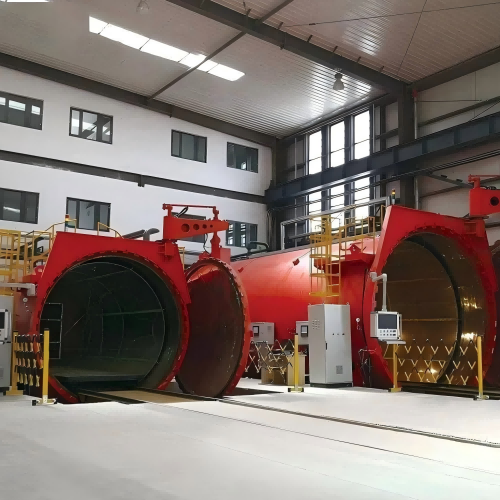Composite material forming processing technology
The processing technology of composite material mainly includes the steps of prepreg preparation, lamination forming, curing and hardening. The key of the molding process is to make the shape size and surface quality of the product meet the requirements of the premise, so that the reinforcement material and the matrix material as good as possible, and minimize its performance degradation, after the matrix material is fully cured, the porosity of the product should be minimized, and the impregnation rate should be increased as much as possible, so as to ensure the mechanical properties of the product.
1. Autoclave process
Autoclave process is one of the most common forming methods for fiber composite materials. The products produced by the autoclave process account for more than 50% of the total output of composite products, and the proportion in the aerospace field is as high as more than 80%.
Autoclave molding is to seal the composite blank, honeycomb sandwich structure or adhesive structure on the mold with a vacuum bag, placed in the autoclave, in the vacuum (or non-vacuum) state, using the high temperature compressed gas inside the autoclave to generate pressure to heat and pressure the composite blank to complete the curing molding.
Advantages of autoclave process: the pressure inside the tank is uniform, the component porosity is low, and the resin content is uniform. The gas temperature of each point in the tank is basically the same, and the temperature difference of each point is not large in the process of rising and cooling, which can ensure the quality stability of the formed parts; The mold is relatively simple, high efficiency, suitable for large area complex surface skin, wall panel and shell forming; The temperature and pressure conditions of autoclave can meet the molding process requirements of almost all polymer matrix composites.
Disadvantages of autoclave process: large investment, high cost, large autoclave system, complex structure; Each solidification needs to consume a lot of expensive vacuum bags, sealing strips, isolation film, breathable felt, stripping cloth and other auxiliary materials, while the molding to consume a lot of water, electricity, gas and other energy.
 CHINESE
CHINESE New Bright Carbon Fiber Products Co., Ltd
New Bright Carbon Fiber Products Co., Ltd


